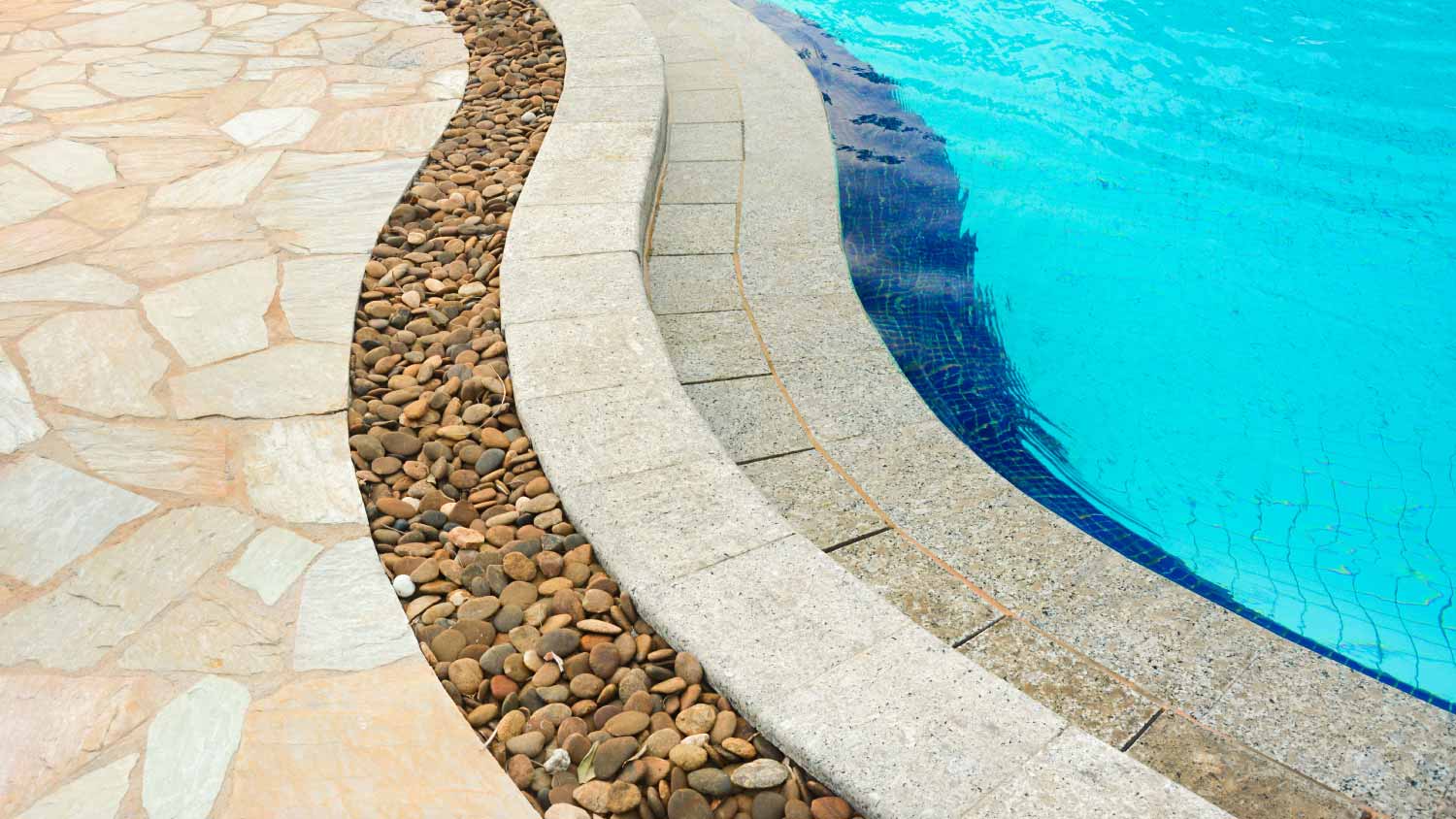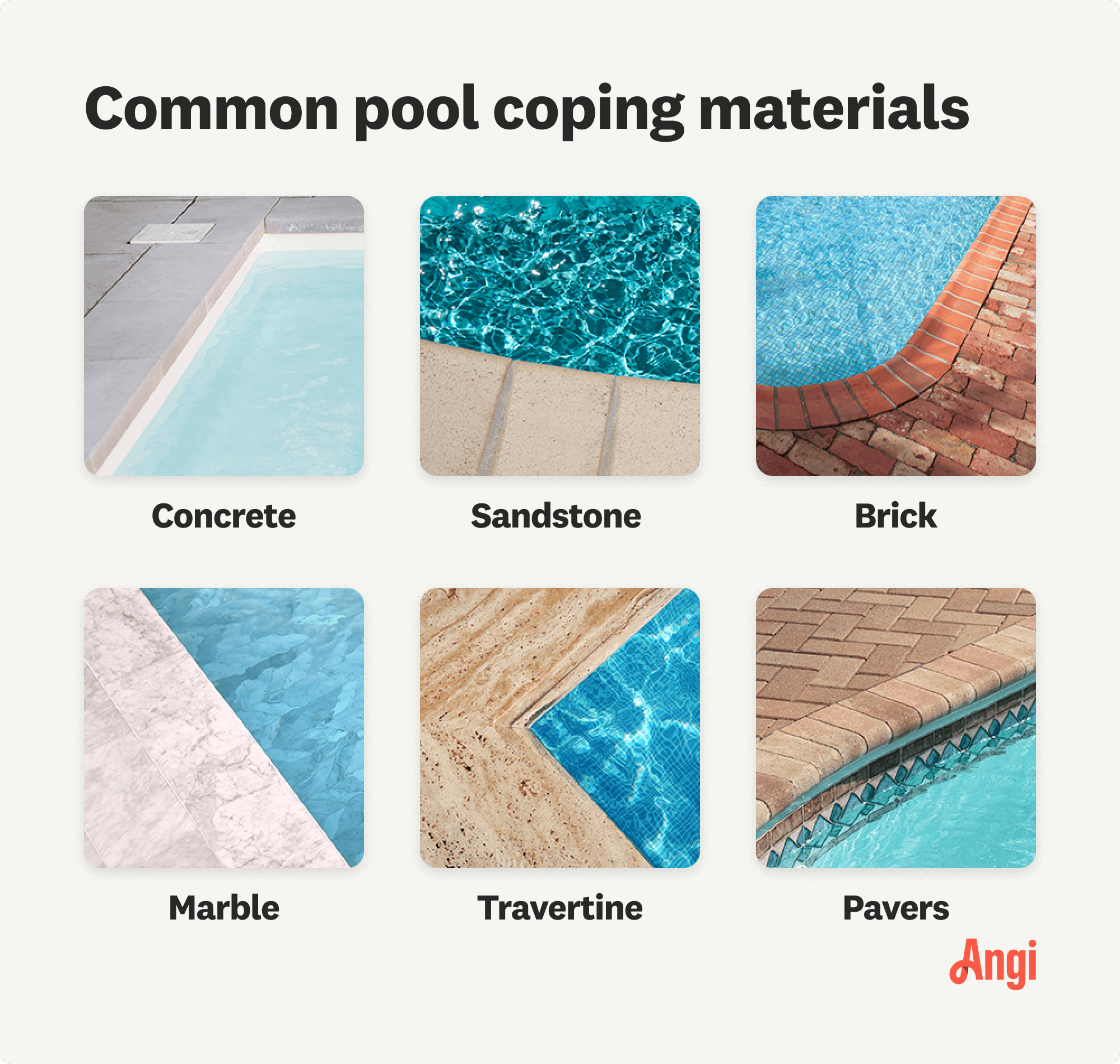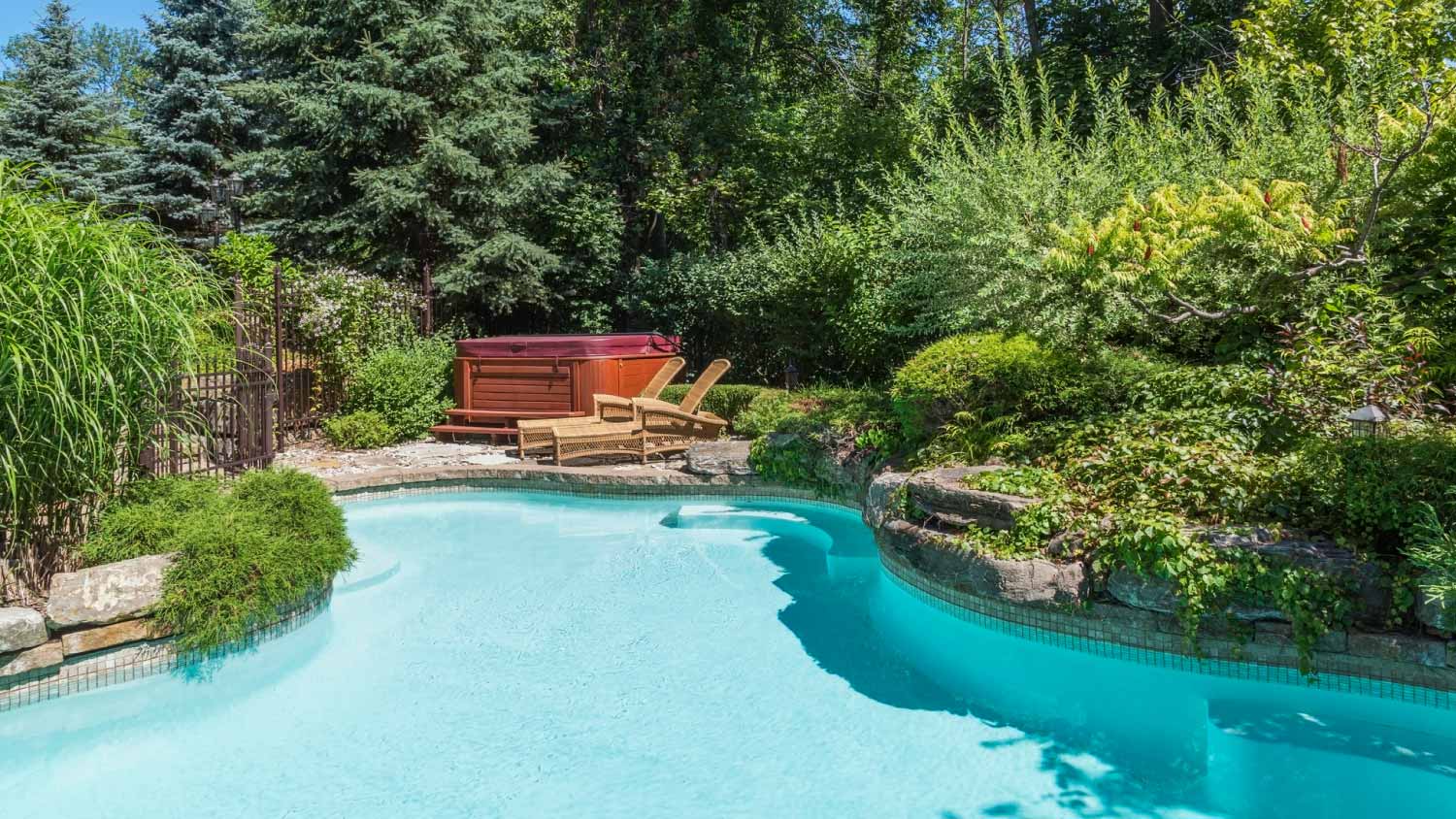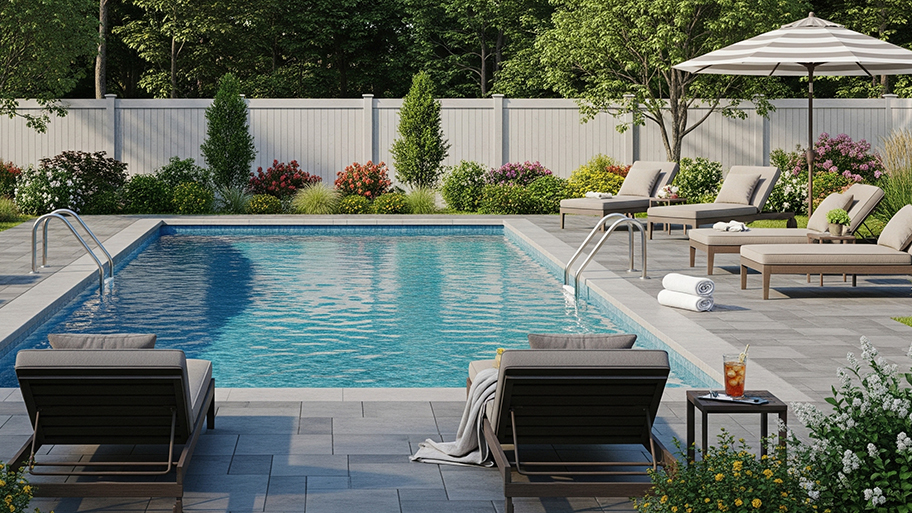
If you’re dreaming of a pool and leaning toward a salt water one, this guide is for you. Learn everything you need to know about salt water pool cost.
Go ahead and sit on the edge of your pool with confidence


Pool coping provides a perimeter between the top of the pool wall and the decking.
Concrete, sandstone, pavers, and other natural stones are traditional pool coping materials.
The design of pool coping protects the deck and pool from water leakage.
Whether you're just dipping your toes in or getting ready for an epic cannonball, pool coping is there for you. But, what is pool coping and how will it affect your new pool design? Pool coping is the supportive cap that surrounds the perimeter of a pool, helping to keep water where it’s supposed to be while giving swimmers something to sit on, stand on, or grasp. Let's dive into what you should know about pool coping.
Pool coping is the border that sits on top of your pool wall and surrounds the water itself. The coping is typically constructed of concrete, natural stone, brick, or any number of types of pool pavers depending on the surrounding deck. Pool coping also comes in a range of designs both for practical and stylistic purposes.
Pool coping is used to:
Seal the top of the pool wall and bond beam to protect the pool shell from water damage
Keep debris from entering the pool water
Prevent splashes from exiting the pool
Alert swimmers of the edge of the pool's surface and simplify pool entry

Pool coping comes in a litany of materials and shapes, but all share several design details. Pool coping typically sits above the pool wall on top of the bond beam (which is the structural support for the pool wall). It usually slants toward the water to discourage water from escaping and outside debris from entering.
Coping also has a say in the pool's final aesthetic. It should match your pool decking and the type of pool finish you choose. Both the type of material and shape can check your function and fashion boxes.
Think of pool coping like the frame around a picture. You can either opt for something simple to blend with the deck or go bold to make an additional statement. Pool coping materials also affect the cost, stability, and longevity of a pool.
Concrete pool coping is the most common material. It is easy to shape, install, and repair. It is also both budget-friendly and structurally sound.
Sandstone is a natural option that can also be easily molded into a variety of shapes. Additionally, it both blends with the natural hues of your landscape and stays cool longer in the sun.
Brick is both durable and slip-resistant, making it a great option for pool coping. Pool coping repair is a little trickier since you will typically need to replace the entire brick if there is a crack.
Marble is a higher-cost option for pool coping, but it both retains heat and looks stunning on the edge of a pool. It is highly durable and long-lasting but can be a slipping hazard.
Travertine is one of the most popular natural stone options for pool coping. The stone is both cool in the summer and slip-resistant.
Pavers are a great option for pool coping since they blend with the surrounding deck and are easy to replace when damaged. Everything from natural stone to manufactured pavers is ideal.

The shape of your pool coping has just as much to do with its look as it does with its structural longevity. Some pool coping shapes even make it easier to get in and out of the pool.
Cantilevered pool coping extends an inch or two beyond the edge of the pool. Both pavers and concrete are common.
Similar to cantilever coping, bullnose often extends slightly over the edge of the water but features a smooth and rounded edge as well.
Homeowners who prefer a seamless drop into the pool without the overhang can choose flat-mount coping. The coping sits flush with the top of the pool wall.
Typically wrapped up in the cost of pool decking, pool coping prices fall between $30 and $50 per linear foot including installation. In total, pool coping adds between $1,800 and $6,000 to a pool's cost.
Your local pool installation team has several options when installing the coping. After sealing the pool's edge and leveling a mortar adhesive, they will either fill a mold with concrete or place pavers individually. Professionals will focus on sealing the space between the coping and the bond beam as well as between pavers to prevent leakage.
From average costs to expert advice, get all the answers you need to get your job done.

If you’re dreaming of a pool and leaning toward a salt water one, this guide is for you. Learn everything you need to know about salt water pool cost.

Pool tile costs can vary widely depending on the size of your pool and the type of tile. Here’s how much it costs to retile a pool and other projects to think about.

Need to know what pool resurfacing costs? Use this handy guide to get an accurate estimate for your project and see what factors can affect your total.

How much shock does my pool need? Here's how to calculate how much pool shock to add to your pool based on its overall water condition.

Everything was going swimmingly, but now your pool heater is not working properly. Here are some troubleshooting tips to get you back in business.

If your pool heater seems to be on the fritz, check out this guide to find out if you're better off with a repair or a pool heater replacement.